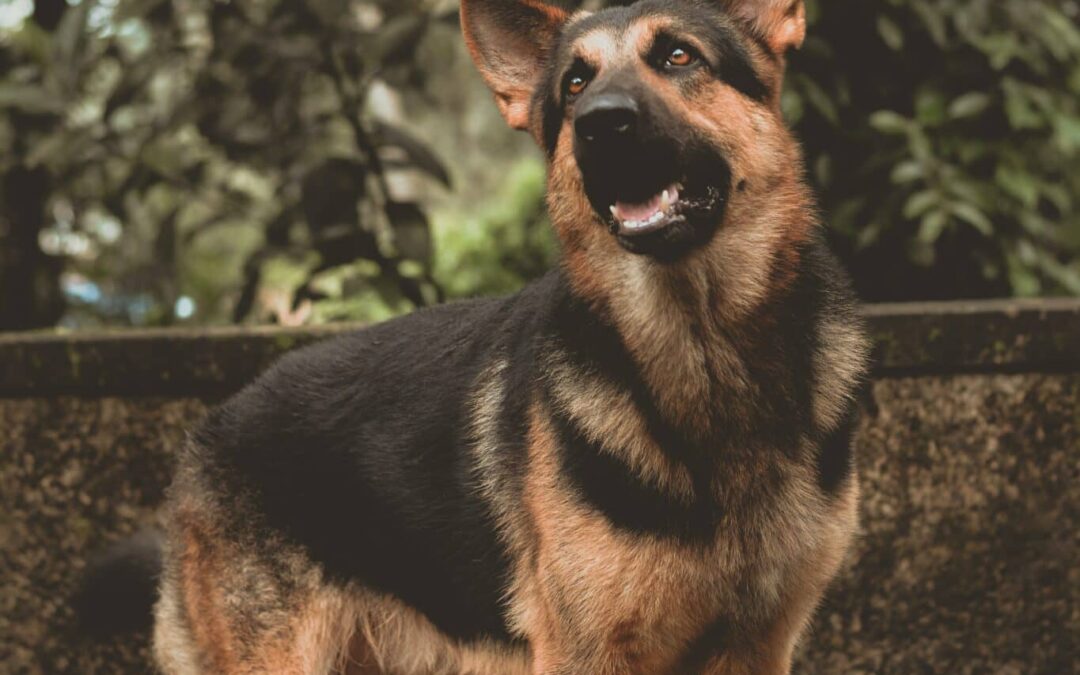Hip dysplasia is one of the bone and joint diseases that most affects dogs. It is an anomaly of bone development that appears mainly in dogs that grow rapidly, which could result in a “poor fit” of the hip bones. The origin is a genetic predisposition that favors instability of the hip joint. As the dog grows, dysplasia causes instability and laxity in the hip joint, which will be responsible for possible clinical signs of limb pain and dysfunction, as well as progressive changes in the joint. This process will lead to secondary joint degeneration (osteoarthritis).
Dysplasia is a genetic malformation, that is, it can be transmitted from parents to children. However, for its evolution, the environment in which the puppy is raised, the surface on which they walk, food, etc. is also important. Although not all descendants of an affected line suffer from it, genetic inheritance is the greatest risk factor.
Dogs with hip dysplasia can live long and healthy lives, especially with treatment and some change in their lives. Although pain can reduce their quality of life, there are simple prevention measures that can help the animal a lot.
Symptoms
Symptomatology in young dogs:
- Hindquarter wobble
- Less activity than other puppies
- Difficulty getting up and sitting down
- Pain on palpation of the hips
Unless it is a case of severe dysplasia, the symptoms will not appear until later due to the progressive degradation of the joint.
Symptoms in adult dogs:
- Signs of pain due to muscle atrophy
- Lameness: when walking the dog is altered to reduce the movements of the joint and avoid suffering
- Alteration of movements when running: the dog swings the hip in an exaggerated way or even runs moving both hind legs at the same time
- The dog takes short steps when walking
- Decreased general activity
- Difficulty getting up and sitting down
- Pain on palpation of the hips
- Loss of muscle mass in the back legs
Breeds with a genetic predisposition to hip dysplasia
- Molossoid-type dogs (mastiffs, Saint Bernard, Presa Canario, etc.)
- German shepherd
- Retrievers (Labrador and Golden)
- rottweiler
- Bulldogs
Diagnosis
Diagnosing hip dysplasia requires a combination of two methods: x-rays of the hip in a special position and specific palpation methods that determine the abnormal laxity of the hip joint; both require light sedation.
Treatment
Before starting any treatment, the first step is to visit the veterinarian and, through an X-ray, he or she can assess the severity of the dysplasia. There are two treatments to tackle it:
Surgical treatment
Although many veterinarians avoid surgical intervention, there are cases that it may be a good option. In general, if hip dysplasia is diagnosed at an early age and osteoarthritis is not yet present, intervention is possible to try to correct the position of the joint and improve its mobility. For those dogs where joint damage has already progressed, it is best to place a prosthesis.
Conservative treatment
The goal with this treatment is to keep the dog in as little pain as possible and to try to progress the dysplasia as slowly as possible. This treatment is based on the administration of anti-inflammatories and chondroprotectors, as well as rehabilitation techniques and canine physiotherapy. These techniques slow down the degenerative process, control pain and increase the dog’s muscle tone.
How to improve the quality of life of a dog with dysplasia?
Exercise routine adapted to hip dysplasia
Strengthening the rear of the animal’s body is important so that the hips bear less weight. For this, short walks and moderate exercise adapted to the needs of the animal will be carried out. Jumps should be avoided, as well as going up and down stairs.
Hydrotherapy
Hydrotherapy is a controlled aquatic exercise that helps animals develop their back leg muscles without injury. There are centers where the animal can walk on a treadmill that is inside a hot water tank. The heat of the water helps the muscles relax.
Other alternatives to hydrotherapy sessions is that the dog can swim in a river or lake, where it will also exercise without damaging its hip.
lifting harness
The lifting harness can help the animal at certain times, if they must walk upstairs (not recommended for dogs with dysplasia), or if they have a hard time walking.
